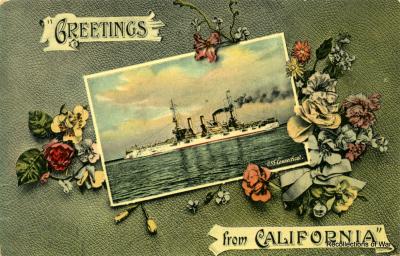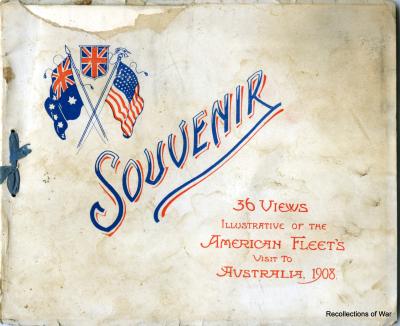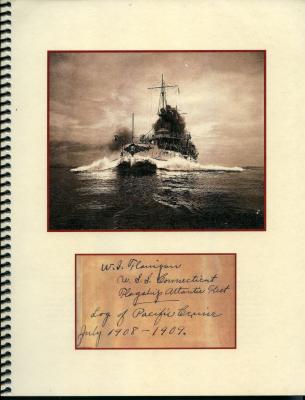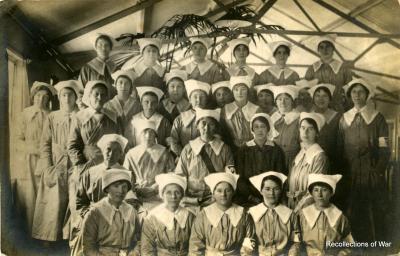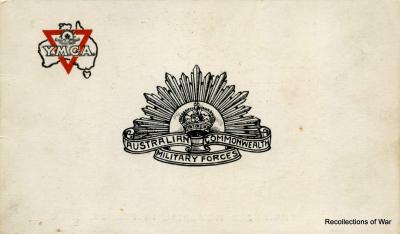Souvenir ashtray Vimy War Memorial - dedicated to Frederick Thomas, C.E.F.
c. 1936Souvenir metal ashtray depicting the Canadian Vimy War Memorial (Mémorial National du Canada à Vimy). The ashtray has been crudely mounted onto a piece of timber and text impressed into each of the four sides. The base of the timber has green felt attached.
The words on the timber are a memorial to a young British man, Frederick Thomas, who served with the Canadian Expeditionary Force in France.
The ashtray is roughly rectangular in shape with curved top and bottom edges. The words 'Souvenir de Vimy' and 'Memorial Canadien' are written above and below the image of the war memorial. At either end, there is a decorative pattern, with thin slots into which nails have been used to attach the metal to the timber below. There are also small curved rests to place a cigarette at each end.
Mémorial National du Canada à Vimy is a war memorial site in France dedicated to the memory of Canadian Expeditionary Force members killed during World War One. It also serves as the place of commemoration for Canadian soldiers of the World War One killed or presumed dead in France who have no known grave. The memorial is the centrepiece of a 100-hectare preserved battlefield park that encompassing part of the ground over which the Canadian Corps made their assault during the initial Battle of Vimy Ridge offensive of the Battle of Arras. The memorial was completed in 1936.
Frederick Thomas was born on 28 June 1899 in Hackney, Middlesex, England. He was aged 9 when his father died in 1909, and his mother applied for him to attend Fegan's training farm in Kent when he was 14. He departed Liverpool on board the SS Empress of Britain on 4 April 1914, arriving in Halifax, Nova Scotia a week later. He was sent to a farm in Elgin, Ontario owned by John A. McKillop. His younger brother, George Percival Thomas, also went to the same farm in 1920, aged 15, although not as part of the Fegan scheme.
Frederick ran away from the farm and enlisted as a Private with the 33rd Battalion, Canadian Infantry (Nova Scotia Regiment) on 4 October 1915 (aged 16). His service number was 401701. He embarked in Canada on 17 March 1916, arriving in England on 26 March 1916. He was attached to the Canadian Machine Gun Depot. He was badly wounded on 6 October 1916, receiving gunshot wounds to his back and thighs, and admitted to 9th General Hospital in Rouen, France. He was returned to England and spent his last months at the C.C.A.C. (Canadian Casualty Assembly Centre) in Shoreham, where he succumbed to his wounds on 6 April 1917, aged 17.
The Fegan Home for Orphaned Boys operated as the Mr. Fegan's Home from 1900 until 1961. While Frederick and George were not orphaned, their mother, Alice, was widowed with 4 children in 1909 when her husband died. Despite remarrying in 1910, the younger boys were sent to Canada in 1914 and 1920. An older son, Stephen, was 17 when his father died. He also served in World War One, but was discharged due to sickness in late 1916, and ultimately died of consumption in 1918. Alice's second husband died in 1927, after which time she may have visited Canada and bought the souvenir. The inscription 'Lost to sight but memory ever dear' shows the depth of her loss. Her younger son, George, seems to have remained in Canada, where he married in 1924 and served with the Canadian Army in World War Two.
Details
Details
On ashtray:
"SOUVENIR DE VIMY
MEMORIAL CANADIEN"
On front face of timber:
"IN MEMORY OF PTE FREDRICK [sic] THOMAS C.E.F.
KILLED 6 APRIL 1917 AGE 17
LOST TO SIGHT BUT MEMORY EVER DEAR
MOTHER HACKNEY LONDON"
Other items from Recollections of War
- Bisque figurine of a Boer War soldier
- Bisque figurine of a Boer War soldier - 'A Gentleman in Kharki'
- Great White Fleet postcard - U.S.S. Connecticut, California
- Souvenir booklet - '36 Views Illustrative of the American Fleet's visit to Australia, 1908'
- Boomerang purchased by Winfield Ira Flanigan in Sydney during visit of Great White Fleet, 1908
- Winfield Ira Flanigan - Log of Pacific Cruise on U.S.S. Connecticut - Great White Fleet 1908
- The Methodist Church of Australasia booklets issued to A.I. F. Soldiers in WWI
- WWI patriotic good luck charm - black cat
- WWI Australian Y.M.C.A. Service medal awarded to female employees at Aldwych Theatre, London
- WWII 'Make Do and Mend' pantyhose repair kit in form of doll
- WWI photographic postcard of a group of Y.M.C.A workers
- WWI souvenir card relating to the ANZAC Memorial in France
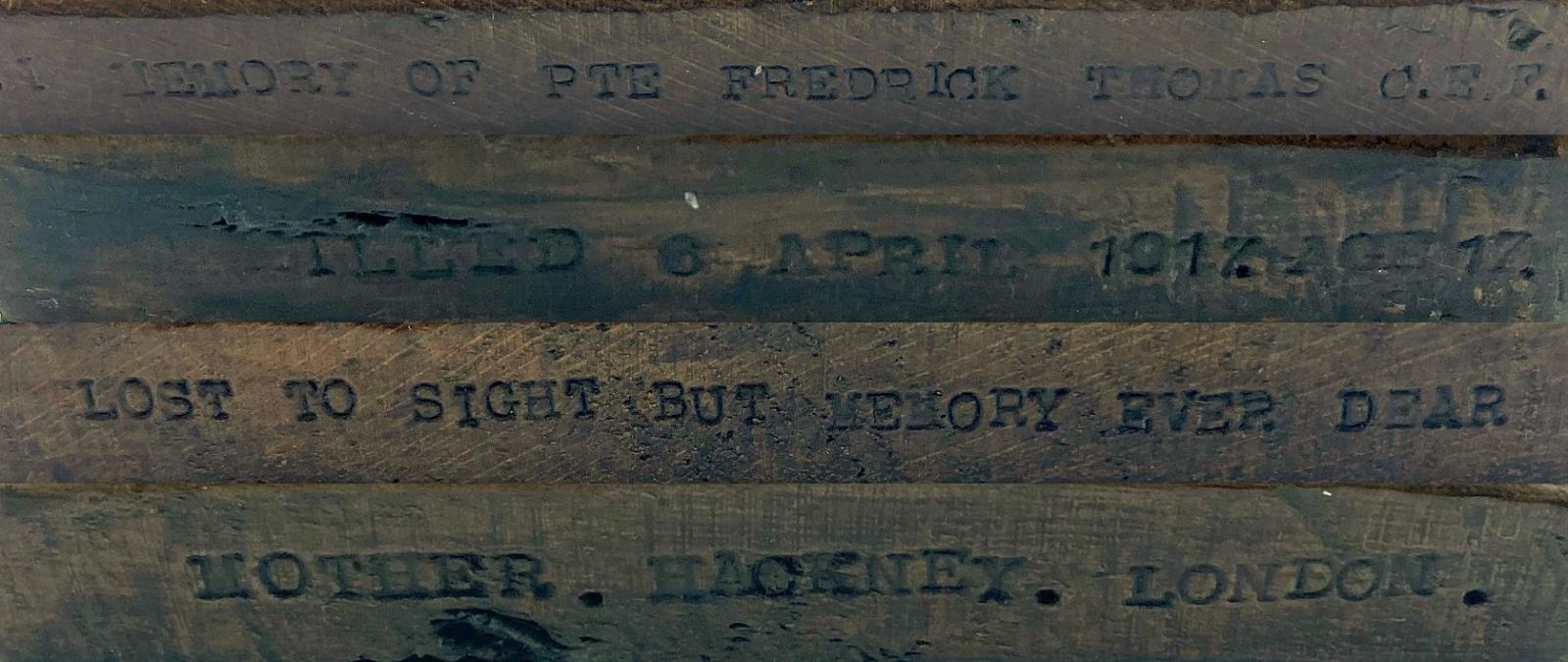
Scan this QR code to open this page on your phone ->

